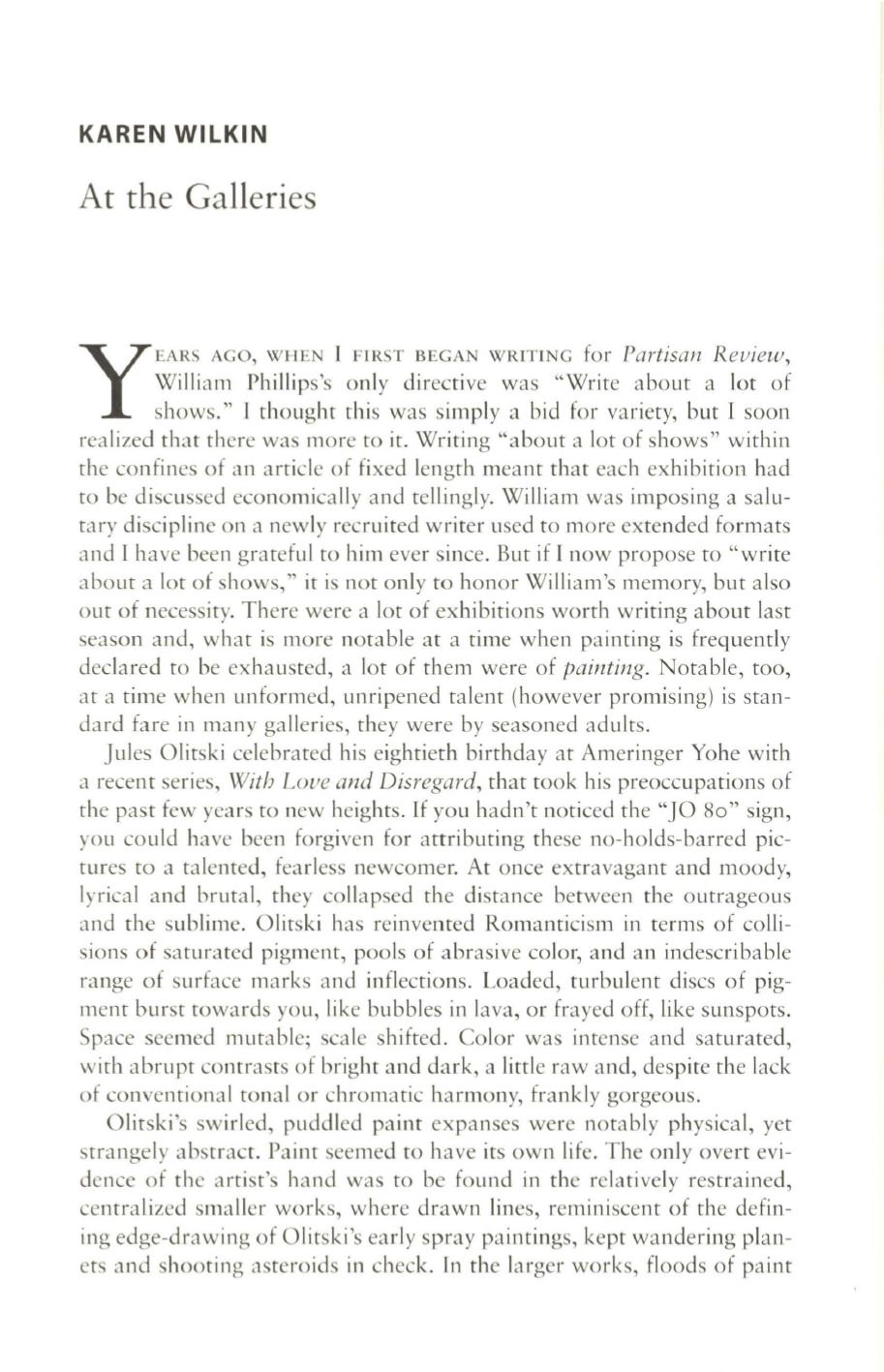
KAREN WILKIN
At the Galleries
Y
EARS AGO, WilEN
I
FIRST BEGAN WRITING
for
Partisan Review,
William Phillips's only directive was "Write about a lot of
shows." I thought this was simply a bid for variety, but
I
soon
realized that there was more to it. Writing "about a lot of shows" within
the confines of an article of fixed length meant that each exhibition had
to be discussed economically and tellingly. William was imposing a salu–
tary discipline on a newly recruited writer used to more extended formats
and
I
have been grateful to him ever since. But if I now propose to "write
about a lot of shows," it is not only to honor William's memory, but also
out of necessity. There were a lot of exhibitions worth writing about last
season and, what is more notable at a time when painting is frequently
declared to be exhausted, a lot of them were of
painting.
Notable, too,
at a time when unformed, unripened talent (however promising) is stan–
dard fare in many galleries, they were by seasoned adults.
Jules Olitski celebrated his eightieth birthday at Ameringer Yohe with
a recent series,
With Love and Disregard,
that took his preoccupations of
the past few years to new heights.
If
you hadn't noticed the "JO
80"
sign,
you could have been forgiven for attributing these no-holds-barred pic–
tures ro a talented, fearless newcomer. At once extravagant and moody,
lyrical and brutal, they collapsed the distance between the outrageous
and the sublime. Olitski has reinvented Romanticism in terms of colli–
sions of saturated pigment, pools of abrasive color, and an indescribable
range of surface marks and inflections. Loaded, turbulent discs of pig–
ment burst towards you, like bubbles in lava, or frayed off, like sunspots.
Space seemed mutable; scale shifted. Color was intense and saturated,
with abrupt contrasts of bright and dark, a little raw and, despite the lack
of conventional tonal or chromatic harmony, frankly gorgeous.
Olitski's swirled, puddled paint expanses were notably physical, yet
strangely abstract. Paint seemed to have its own life. The only overt evi–
dence of the artist's hand was to be found in the relatively restrained,
centralized smaller works, where drawn lines, reminiscent of the defin–
ing edge-drawing of Olitski's early spray paintings, kept wandering plan–
ets and shooting asteroids in check.
In
the larger works, floods of paint


